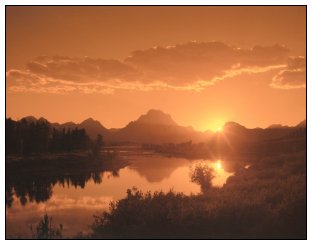The Mighty Columbia River
The Columbia River
The Columbia River is situated in the United States and stretches over seven states, including Oregon, Washington, Idaho, Montana, Nevada, Wyoming, and Utah, as well as one province in Canada, British Columbia. The Columbia River is the second largest North American River, with the Mississippi taking first place. Sometimes, when the river is in flood, the Columbia River can exceed the flow of the Mississippi. The Columbia River is the largest river in the Western Hemisphere to flow into the Pacific Ocean. The river drains into a basin of 258,000 square miles (415,211 km²) and flows for 1,232 miles (2,044 km).  The river is four times the size of the Colorado River and is the largest North American hydroelectric power-producing river.
The river is four times the size of the Colorado River and is the largest North American hydroelectric power-producing river.
Tributaries
There are more than 40 tributaries to The Columbia River. Some of the largest tributaries are the Snake River, the Willamette River, the Kootenay River, the Pend Oreille River, the Cowlitz River, and the Spokane River. Some of the world’s greatest floods occur around the Columbia River.
Origin
The Columbia River (or the Mighty Columbia as it is sometimes called because of its large water volumes) was named after the first European ship to travel up the river on May 11, 1792. This ship, called the Columbia Redivia, belonged to Captain Robert Gray, who was on his way to trade for fur in the Pacific North West.
Lewis and Clark
In 1805, the Lewis and Clark Expedition, looking to reach the Pacific Ocean, traveled down the Columbia River. This expedition led to many wonderful discoveries about the North American Continent. In 1825, Fort Vancouver (now Vancouver, Washington) was established on the river banks as the region’s fur trading headquarters. Ships from London could easily enter the Columbia River via the Pacific Ocean to exchange goods for fur.
Dams
Today, there are more than 400 dams and hundreds of other structures in the Columbia River and its tributaries. The Columbia River Basin is also regarded as the most hydroelectrically-developed river system in the world. There are 150 hydroelectric projects in the river, and these projects produce almost half of all the hydroelectricity in the United States. There are 14 dams in the river’s mainstream, of which 11 are in the United States and 3 in Canada, as well as 8 locks. The first major hydropower-producing dam, the Rock Island Dam, was completed in 1932. Later on, other larger dams were built. The Bonneville Dam was completed in 1938, and the Grand Coulee Dam in 1941. In 1973, the Mica Dam was completed in Canada. The Grand Coulee Dam and Chief Joseph Dam are the two largest dams in the river, and also the largest in the United States. The Grand Coulee Dam is the world’s third-largest hydroelectric dam.
Interesting Phenomena
Some interesting events involving the Columbia River occurred when a family who went for a picnic on the banks of the river about five miles from Vancouver, Washington, discovered $5,800 on February 13, 1980. The FBI still believes that the money was part of DB Cooper’s, the 1971 Highjacker, ransom money. Another notable event was when Christopher Swain of Portland, Oregon, became the first person to swim the river’s entire length on July 1, 2003.
Related Pasco Resources:
- Pasco and McNary Wildlife Refuge
- Eco-Tourism and Pasco Washington
- Museums and Pasco Wa
- Arts and Music in Pasco Wa
Related Resources for Along the River's Path:
- Land of Three Rivers
- Kennewick Rivers
- The Columbia River
- The Snake River
- River Recreation
- Port of Pasco
- Richland Steelhead Fishing
- Kennewick Water Follies
- Hydroplane Races
- Naturalist's Paradise
